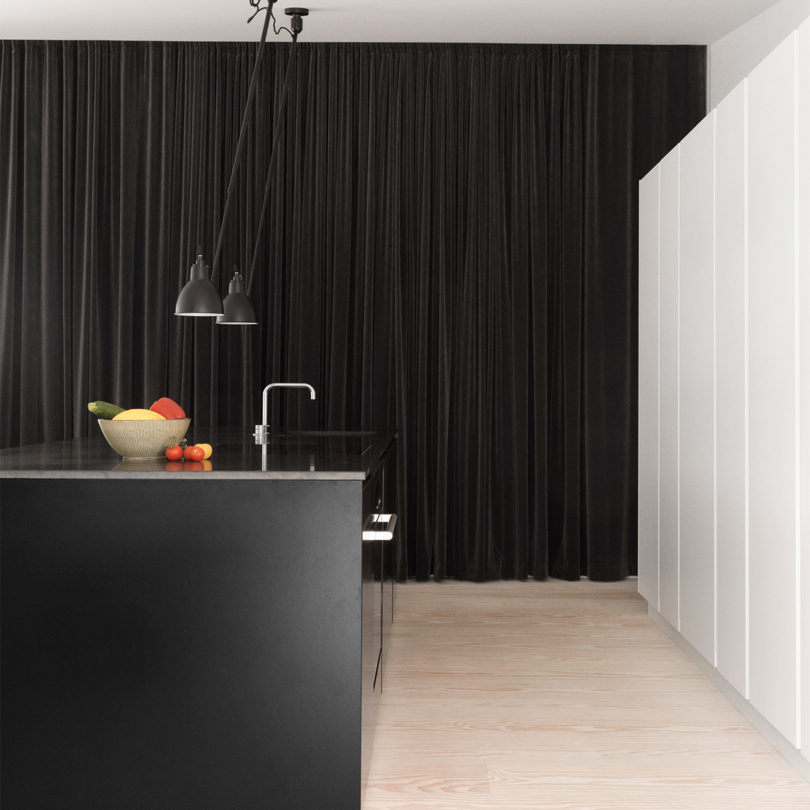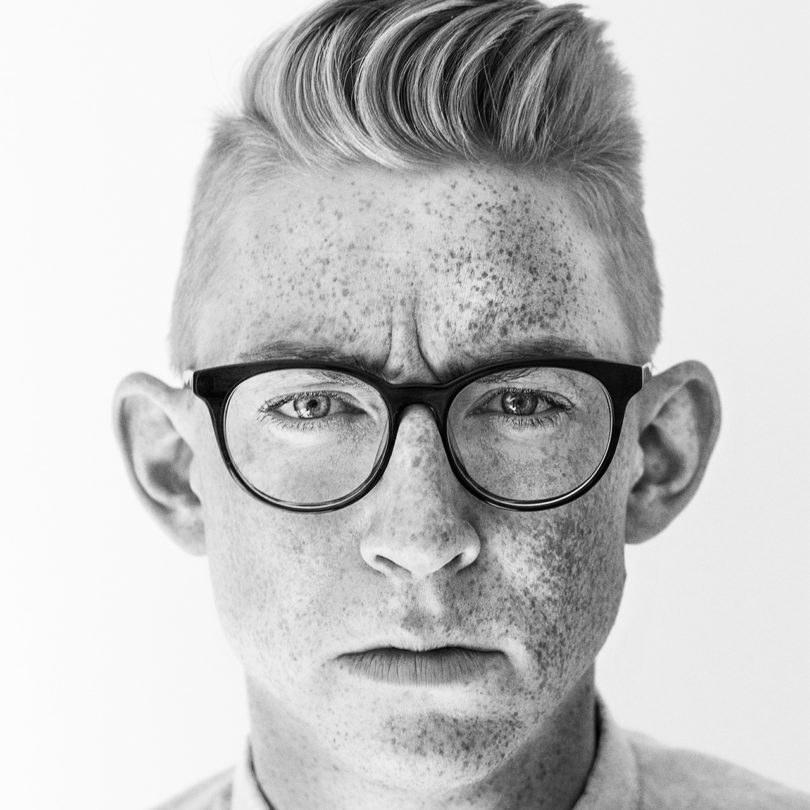Interview with Danish Model Turned Designer Emil Thorup
The phenomenon of “model turned actor” is so prevalent, it has its own acronym: MTA. Less common is the route from modeling into furniture design, but that’s the path Danish model and TV host Emil Thorup has taken – one that has led him not only into designing furniture but also into architecture, interior design and art sales. Design Milk caught up with him to find out more…
What’s the most important thing to know about you?
Not the most important thing, but the most peculiar thing is probably that I used to be a fairly successful TV host, and spent my days experimenting on my own body in the interest of the common man. I worked on the biggest network we have, which is the public broadcasting network – and amongst other things, I ‘gave birth’ and had a nipple pierced.
Have you always been interested in design?
Yes, I remember being in my grandfather’s living room aged six, drawing his house from memory, and recreating it with a better floor plan in excruciating detail.
What did you study?
Nothing, really. I finished high school, decided I wanted to be in a boy band which I did for a couple of years, and then decided to work in films – which I did for a couple of years before being head-hunted to be the personal assistant of a great comedian – and developing his TV shows and film, and later appearing in them. I don’t really think this was at all helpful for my current career, as I’ve had to start from scratch. Obviously, I have a huge network but the two different paths have little to do with each other. I did, however, learn very early on how to brand myself and have used that experience to brand my companies – that’s definitely been helpful.
You run a furniture design company, an architecture practice, an interior design firm and an online art platform – how on earth do you fit it all in?!
I actually just launched a communications company that specializes in Digital Branding called 1702 and will launch a kitchen brand later this year, so you’re missing a few, but I understand your question. The honest answer is “poorly”. It’s all a big mess in my head and I’m experiencing the first symptoms of stress these days, so I take that seriously of course. I’m very privileged that I have great CEOs and partners in all the companies, that do the actual running of the companies, but I still have to remain the beacon of light in the dark – and that can be a lonely task.
Handvärk, your furniture brand, specializes in steel, marble, brass and leather furniture all produced in Denmark – why those materials, why made in Denmark?
It started out with the realization that all Danish design in some way has wood as its primary material. I don’t particularly like wood except in flooring, so I wanted to venture out with a brand that was true to the Nordic DNA but with an alternative choice of materials. Secondly, those are materials that will outlive us all, and I find great pride and joy in the fact that my furniture will be standing after I’m not. There’s a touch of sustainability to that perspective, even though the materials themselves not are acknowledged as ‘sustainable’, the fact that they can last 100 years compared to five-10 years for a bamboo table does change the equation in my humble opinion. We chose to produce most of our furniture in Denmark because it’s the smart thing to do. We work with robotics in welding, that ensures 0% mistakes, we have a very low carbon footprint with almost no transportation needed from production to warehouse – and lastly, the quality. Danish people are force-fed ‘high quality’ from birth, and we have a strong opinion about doing things the right way. This finds its way into our products.
How do those ventures all feed into each other and keep you creative and interested?
It’s actually a very beautiful and simple story. I wanted to build a summer home. So I drew one and build it. That home needed furniture. So I drew some and built them. I decorated it – and needed art for the walls that was affordable. So I found artists to do that. All of these things are now a business and even though they haven’t really played together yet, they are starting to do so now. We’re shooting photos of the furniture in my houses, we’re photographing the houses with my furniture and art in them, we’re even collaborating now to do The Handvärk House – which in many ways will complete the circle.
Which is your favorite?!
Handvärk has been love and hate equally – it’s not easy to establish a worldwide design brand (we’re in 25 countries now!) when you want to fund it yourself. ET Hus, my architecture practice that also builds the houses, is more an unconditional love. I am an architect at heart, and it brings me joy every day to design and build the homes of real people.
Talk me through your design process.
Oh, I’ve had this question so many times, and it’s a great question, but I never seem to be able to answer it. I don’t really do the whole ‘sit and watch the ocean and become inspired’ thing, I’m a very pragmatic designer. What is possible within our realm of production and budget, what products are we missing in our portfolio, etc. I do become very inspired when faced with obstructions though. Give me a clean white paper and I will hate you, but present me with almost impossible obstructions and I will make you a house or piece of furniture that you’d never dreamt of. Constraints are my drug of choice. In terms of how things come to life, I’m very privileged. I make a hand drawing (for both architecture and furniture), and send it to my technical designer in either ET Hus or Handvärk – a few days later I see a professional drawing, I print that, make my changes and send it back. In a couple of weeks, I am presented with a prototype, and I work from there. Development is quite easy when you’re both the owner of the company and the designer!
What are you most proud of?
The Daybed from Handvärk will always be my baby (as Mariah Carey sang!) It’s by far the piece with the biggest potential in terms of timelessness and turning into a classic. And it’s the one piece I haven’t hated for any period of time. When facing trouble with production or something else, you grow tired of a product, but the Daybed has been perfect since day one.
What advice would you give a young designer or design entrepreneur?
Oh God, get your own brand. Working with others is a disaster.
What’s next?
I have just bought an oceanfront plot north of Copenhagen with a private beach and yesterday finished drawing the two-story glass house where I’ll be living once it’s finished. I plan never to leave it (except when going to Japan, my favorite place on the planet). I’ll have parties and dinners all the time, and in a few years, add some babies into the mix. But my real goal in life is to be financially independent, so I can support myself and my family for generations to come, so my siblings and children can become poor artists or folk musicians if that’s what they want out of life. That, and an apartment in Tokyo.
from Design MilkInterior Design – Design Milk http://ift.tt/2DK9RSm
via Design Milk











No comments